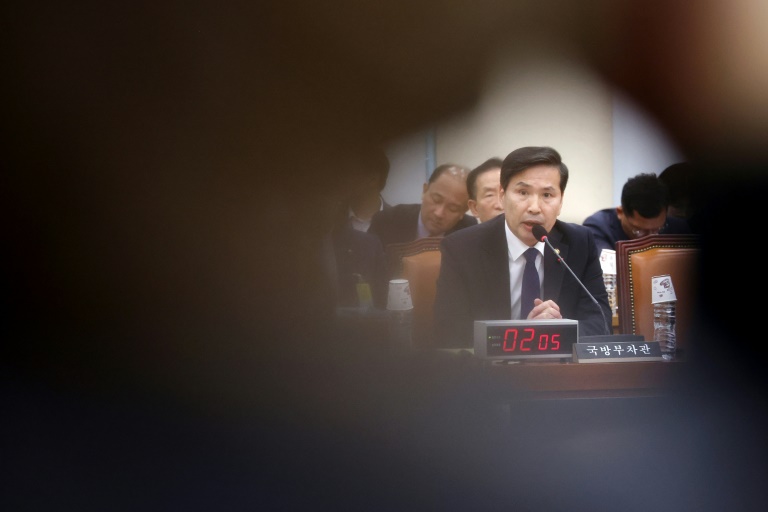AUSTRALIA’S central bank is conducting a bold monetary experiment – by doing nothing.
Where most developed-world peers are now well into their easing cycles, the Reserve Bank of Australia (RBA) has left interest rates at a 13-year high of 4.35 per cent since late 2023 and most economists expect that to remain the case until at least February.
The limits of the strategy are starting to become clear. Data on Wednesday (Dec 4) showed gross domestic product fell for a seventh straight quarter on a per-capita basis in the worst such stretch since 1991, excluding the pandemic, and yet core inflation remains stubbornly above the central bank’s 2 to 3 per cent target.
The weak GDP data prompted economists at Goldman Sachs Group to predict a “dovish pivot” at the last rate decision of the year on Tuesday. But there will be no pre-Christmas rate cut, according to economist and money market bets.
The long hold is fuelling strains between the inflation-targeting board chaired by governor Michele Bullock and a government seeking a second term in office that’s trying to offset elevated prices with handouts and tax cuts.
Money markets suggest the RBA is unlikely to ease before April, just before a federal election is due in a nation where heavily indebted borrowers tend to blame the government for cost-of-living pressures rather than the central bank.
BT in your inbox
Start and end each day with the latest news stories and analyses delivered straight to your inbox.
“It’s too soon to say whether the RBA’s experiment has been successful,” said Sally Auld, chief investment officer at wealth manager JBWere. “I’ve probably been on the more sceptical side on this one but watching with keen interest.”
The RBA was largely in line with a synchronised global tightening cycle over 2022 to 2023, but did not push rates as high as others as it prioritised maintaining employment gains. But where inflation is back in target zones elsewhere, that’s not the case in Australia.
That means if the Federal Reserve cuts rates for a third consecutive time later in December, the bottom of its range would be below Australia’s cash rate for the first time in six years, excluding the pandemic.
“In Australia, interest rates did not reach the same levels of restrictiveness as many other countries, and consistent with this, inflation has been somewhat higher relative to target here than in most of those economies, and the labour market is also tighter,” Bullock said last month. “This means that even with a similar approach to setting policy, the time to adjust domestic monetary policy settings can differ from peer central banks.”
When the RBA started lifting rates in May 2022, the unemployment rate was 3.9 per cent; it is now 4.1 per cent. The proportion of the working age population with a job is at an all-time high and above the OECD average, according to John Hawkins, who previously worked as a senior economist at the RBA.
“The IMF has called the RBA’s approach ‘appropriate’ so not the most enthusiastic language,” said Hawkins, a senior lecturer at the University of Canberra. “I think they deserve a bit more praise than that.”
However, the verdict is still out on whether the RBA’s approach is one to emulate, especially as a closely-fought election due by May means potentially greater fiscal spending.
“We think expansionary fiscal settings will increasingly temper easing cycles including the RBA’s as fiscal settings and rising debt move into focus for investors in 2025,” said Su-Lin Ong, chief economist at Royal Bank of Canada.
There’s also uncertainty around how US policy changes under president-elect Donald Trump will impact Australia. The RBA discussed various scenarios and implications for Australia at its November meeting and concluded that the impact could ultimately be quite modest. Members noted that irrespective of the election outcome, US fiscal deficits were forecast to be large, making sovereign debt markets more sensitive to adverse shocks over time.
Meantime, the Reserve Bank of New Zealand (RBNZ) is facing questions over whether it overdid its tightening by taking rates to 5.5 per cent – the highest since the 2008 to 2009 global financial crisis. The country is on track for its second recession in less than two years.
“I think there’s a lot for us to learn from the two different approaches to monetary policy across the Tasman,” RBNZ chief economist Paul Conway told a parliamentary select committee hearing on Nov 28. “We’d compare what we have done to what Australia’s done, it’s a wonderful natural experiment for the macro researchers among us, so we will be looking closely at that.” BLOOMBERG






